The Guide to Agile Business Intelligence
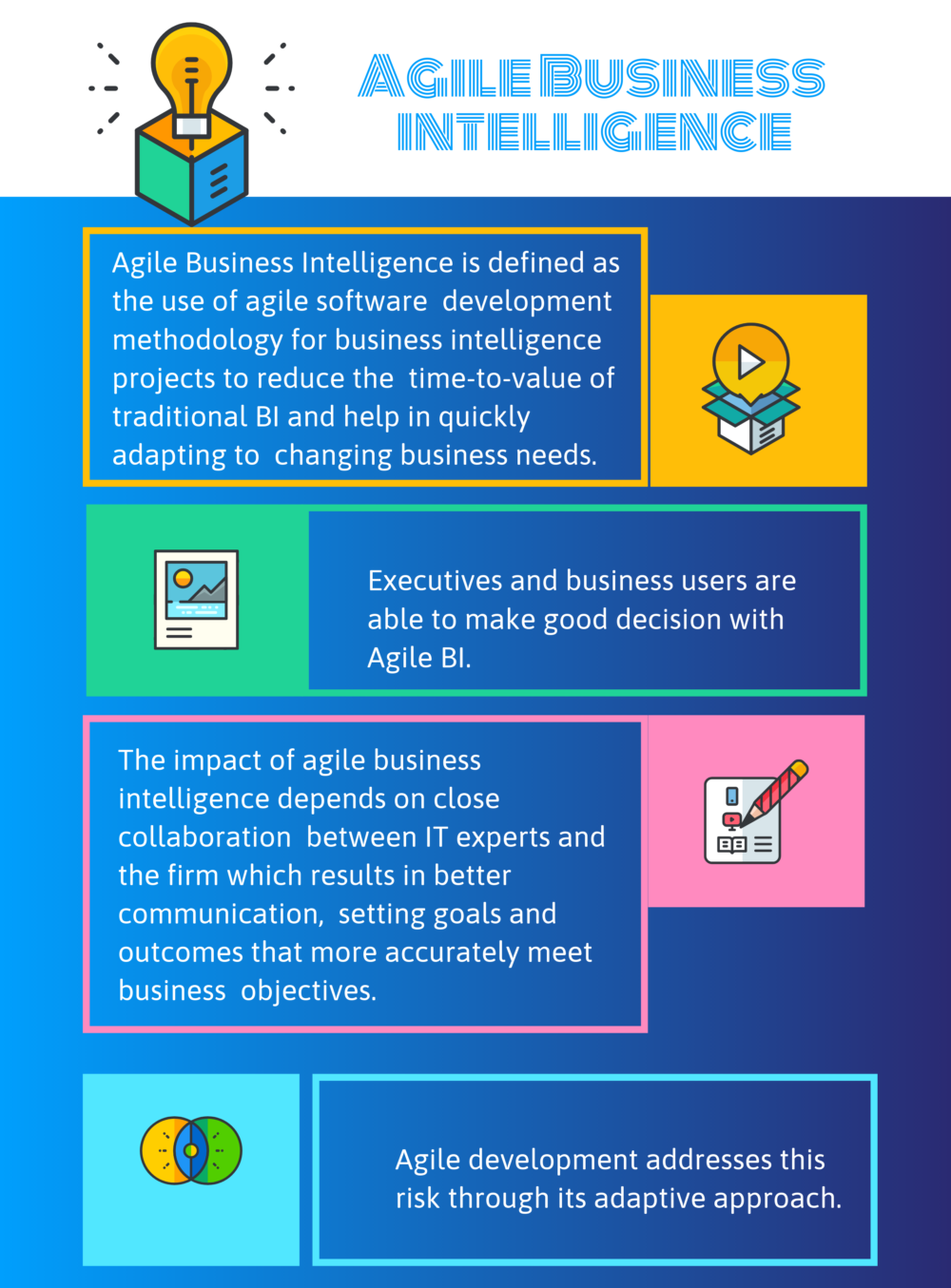
Agile Business Intelligence (BI) is a data-driven approach to decision-making that emphasizes flexibility and adaptability. It is based on the Agile methodology, which is commonly used in software development to deliver high-quality products quickly and efficiently. In the context of BI, Agile methodology is applied to data and analytics projects, allowing organizations to respond quickly to changing business needs and market conditions. Agile BI involves frequent and regular iterations, where data and analytics teams work closely with stakeholders to validate and refine their approach based on feedback. This iterative approach helps organizations to quickly deliver insights and value, and to adjust their strategy as needed in response to changing circumstances. Agile BI enables organizations to stay ahead of competitors and keep pace with rapidly changing market trends and customer needs, helping them to make better decisions and drive success.
Agile Business Intelligence is defined as the use of agile software development methodology for business intelligence projects to reduce the time-to-value of traditional BI and help in quickly adapting to changing business needs. Executives and business users are able to make good decision with Agile BI. The impact of agile business intelligence depends on close collaboration between IT experts and the firm which results in better communication, setting goals and outcomes that more accurately meet business objectives.
Most agencies store data from both internal and external data sources such as databases, e-mail archives, file systems, spreadsheets, digital images and audio files. Most of the data does not conform to a defined pattern. Conventional Business Intelligence systems use a small portion of the available statistics organized information is used primarily.
The main elements of a traditional BI system are: Extract, transform, and load tools, data analysis and reporting system and the methodologies involved in the inspection of firm's data. Agile BI can disseminate precise data in the desired form and to the targeted audience on time.
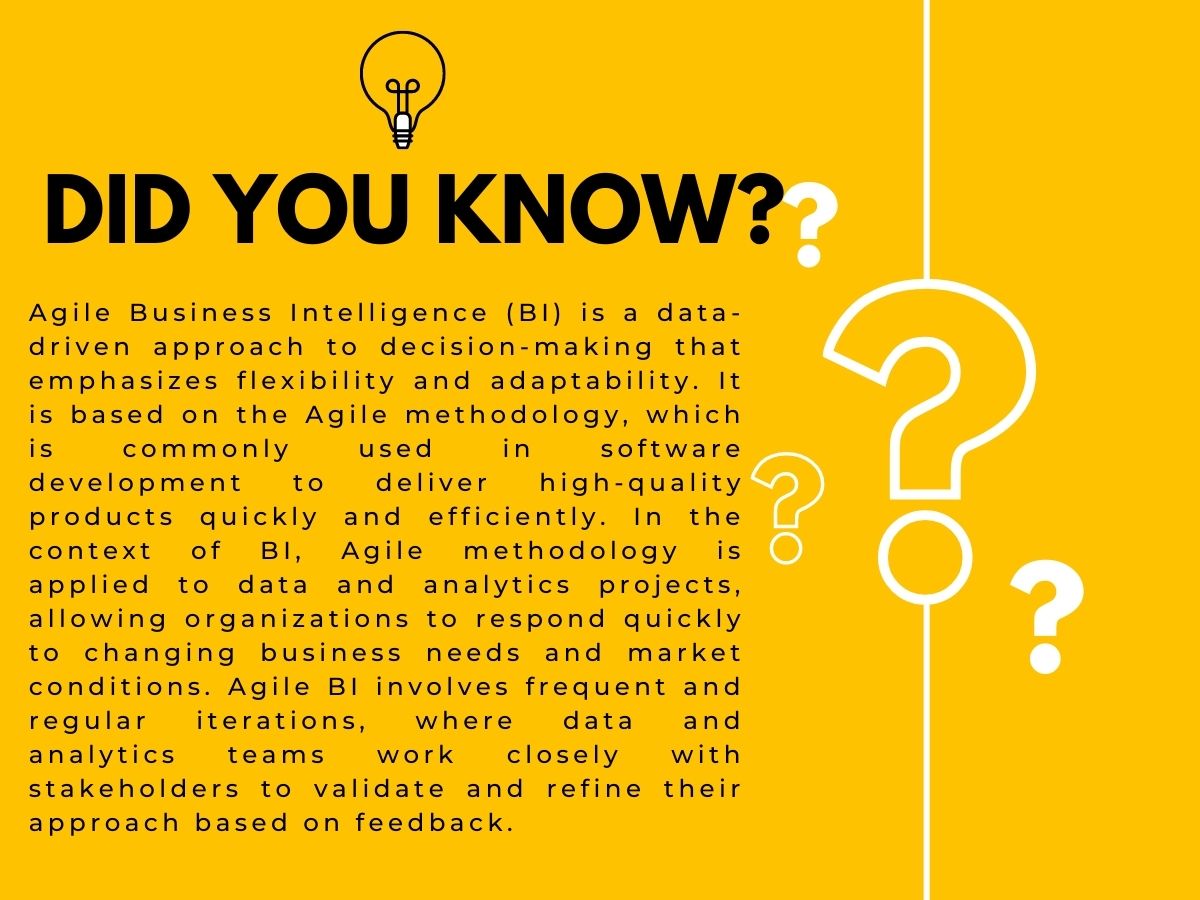
Agile Business Intelligence
You may like to read: Top Agile Business Intelligence Best Practices
Modern software projects are threatened by constant changes in requirements and the business as well as the regulatory environment. Agile development addresses this risk through its adaptive approach. It exhibits high flexible response to change, due to the incremental, its adoption of the iterative approach. The increment is also very short, and the software developers are in constant interaction with the end user.
Any change in requirement is discovered early and the project allowed to adapt to these changes quickly. Due to the frequent close interaction with the customer, requirements are directly collected during each increment from the customer as opposed to formal documents that represent them as in other traditional development methods. This eliminates any form of ambiguity in understanding the requirements and ensuring that stakeholders uphold the commitments to the requirements they provide. Agile development best fits software projects which lack structured planning, due to its adaptive planning feature which requires minimal planning activities be conducted formally.
You may like to read: Top Guidelines for a Successful Business Intelligence Strategy
The problems with traditional Waterfall Methods
The waterfall method is a long-established model used in system development life cycle to create a network in concatenation. This model is referred to as waterfall because it develops in a sequential pattern from one phase to another in a downward approach. The model is sub-divided into various episodes, and the accomplishment of one step heralds the beginning of the next stage. Every event has to be accomplished before the next starts, and there is no coinciding of the phases.
This model abstracts the essential software development activities of requirements, analysis, design, coding, testing, and operation sequentially. It was proposed to avoid the risks introduced by the code and fix technique by having the requirements and analysis stages come before the coding stage. This ensures that user requirements are defined in advance, thus, reduces the time and effort wasted on several iterations of code and fix. In the original waterfall model, any error that occurs at any stage passes on into the subsequent steps until it is later discovered in the testing phase.
You may like to read: Open Source, Free and Top Dashboard Software
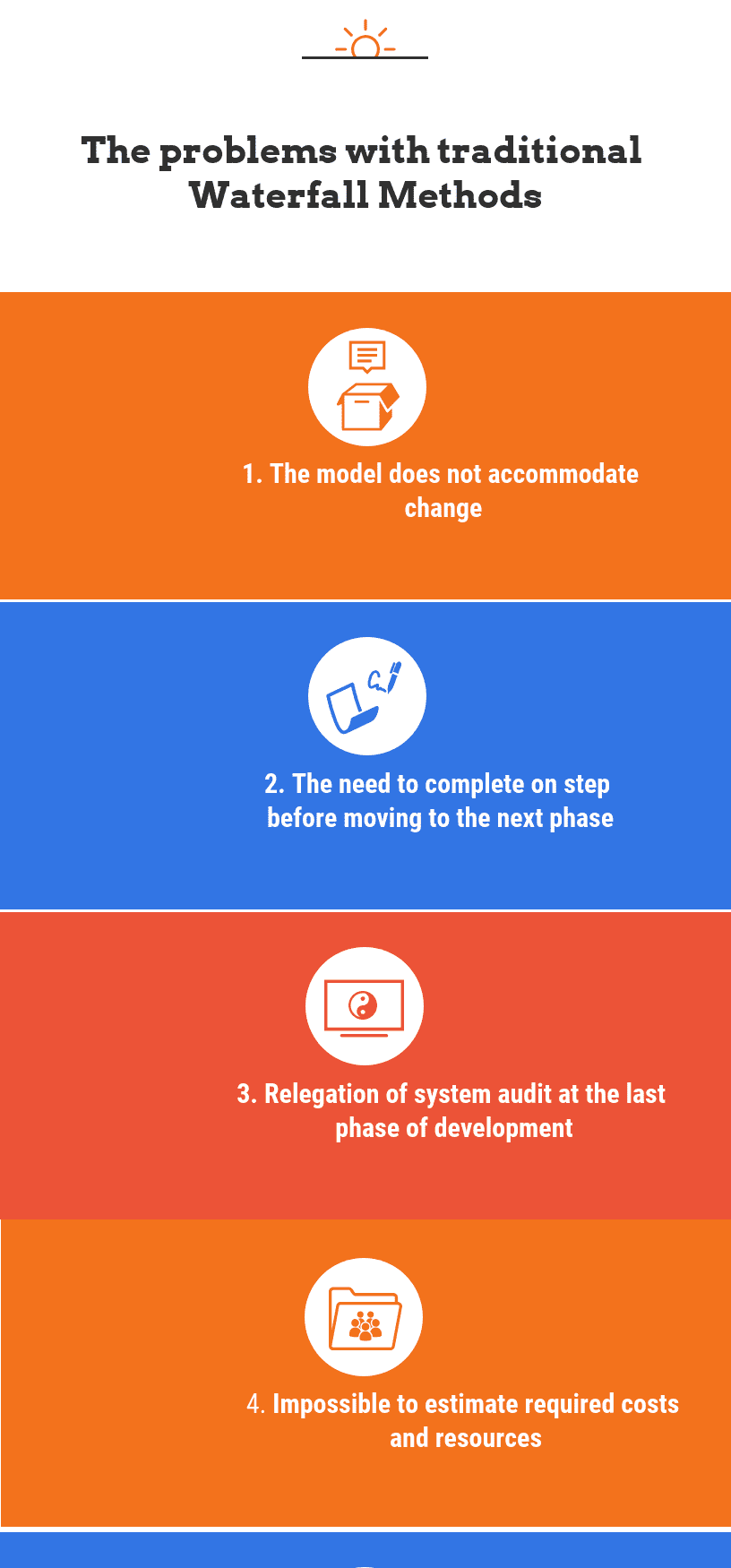
The problems with traditional Waterfall Methods
- The model does not accommodate change: The waterfall model is based on constant needs change during the programming phase. The structure of the waterfall model does not accommodate change since it requires that all the conditions are outlined beforehand during the requirements phase to guarantee that no alterations are carried out during the development stage.
This belief is idealistic since it impossible for projects to identify requirements beforehand. It is impossible to prevent changes in conditions because continuous requirement change is not a difficulty that needs solving or restricted to the waterfall model. On the contrary, the unstable nature of the software coupled with the restrictive character of the waterfall model makes changes undesirable.
- The need to complete on step before moving to the next phase: Waterfall model requires every step to be completed entirely before moving into subsequent phases. This model fails to allow overlap between stages. These results in tremendous time, cost, human resources, and other resources, due to the extensive the phases in the waterfall model.
Team members who are assigned specific roles at the development stages have to spend most of their time waiting for other steps to complete so that they can start doing their work.
You may like to read: Business Intelligence Tools and the Types of Business Intelligence Software
- Relegation of system audit at the last phase of development: Lack of quality assurance during the developmental process poses a risk to waterfall methods. The product validation is relegated to a single testing phase that occurs later in the development process.
The testing phase in the waterfall model is the riskiest phase since it is the last stage where the whole system is subjected to testing. Therefore, all problems, bugs, and risks are detected too late in the development phase and require enormous resources and energy to correct.
- Impossible to estimate required costs and resources: The long stages required in developing this system make it impossible to estimate, time, cost, and other resources necessary to complete each step successfully. Additionally, in the waterfall model, does not have a working product until very late in the development process when the product is almost complete, and any change is impossible. The failure of the product to meet consumer demands presents a problematic position for developers having invested lots of resources in its development.
Agile BI Project Management Methods
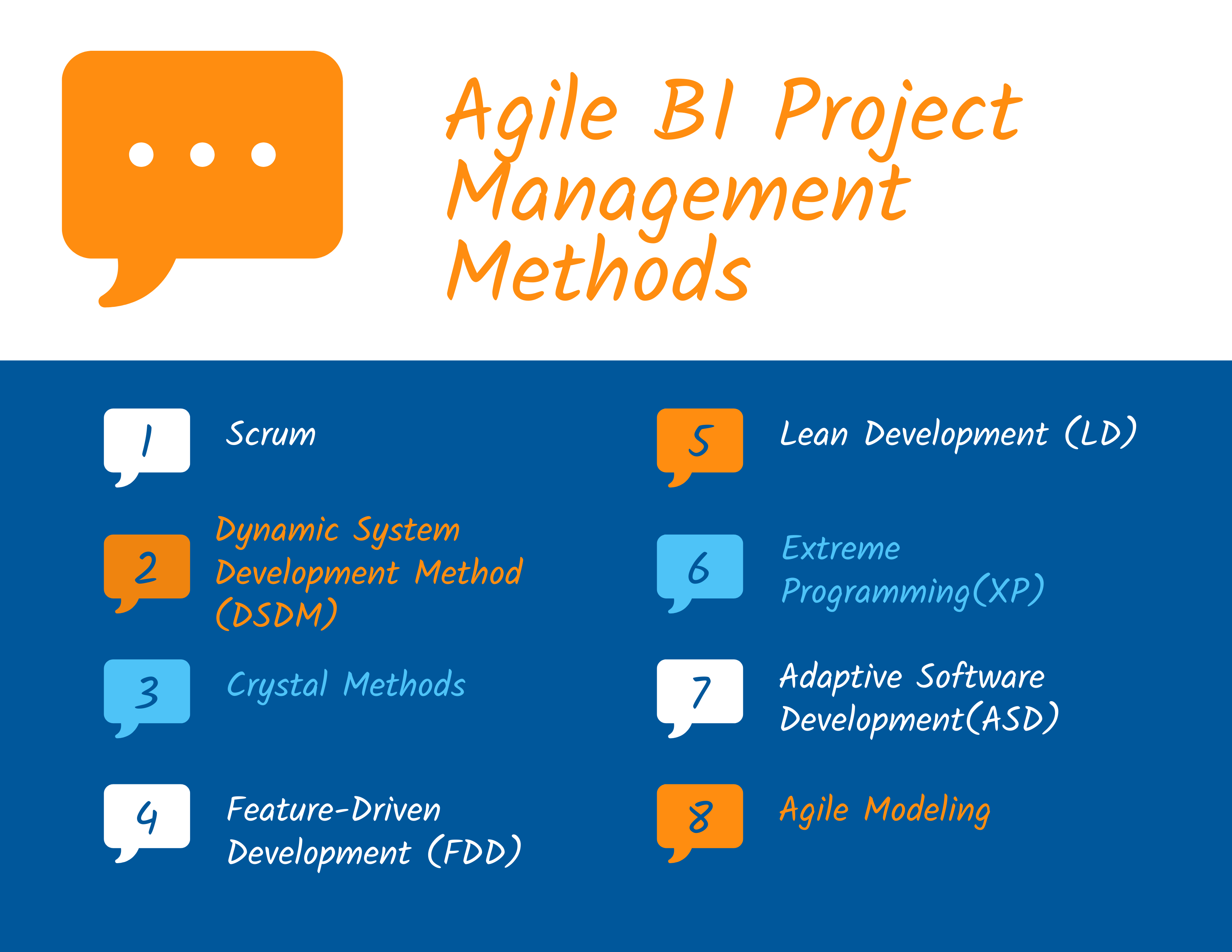
Agile BI Project Management Methods
- Scrum: Scrum is a project management framework which focuses on software development in 30- day sprint cycles in which a specified set of Backlog features are delivered. The core practice in scrum is the 15-minute meeting daily for co-ordination and integration.
- Dynamic System Development Method (DSDM): This is an extension of Rapid Application Development practices. DSDM has the best supported training and documentation than any other agile software development methods at least in Europe.
- Crystal Methods: Focuses on the people aspects of the development collaboration, good citizenship and cooperation.
- Feature-Driven Development (FDD): FDD consists of a minimalist, five-step process that focusses on developing an overall “Shape” object model, building a feature list, and then planning-by-feature followed by iterative design-by-feature and build-by-feature steps.
- Lean Development (LD): Lean Development is derived from the principles of Lean production, which extends traditional methodology view that the change as a risk of loss to be controlled with restrictive management practices to a view of change is as producing “opportunities” to be pursued using “risk entrepreneurship”.
- Extreme Programming(XP): XP provides a system of dynamic practices, whose integrity as a holistic unit has been proven. XP has clearly garnered the most interest of any of the Agile approaches
- Adaptive Software Development(ASD): Shows how organizations can respond to the turbulence of the current business climate by harnessing rather than avoiding change
- Agile Modeling: Agile Data method defines a collection of philosophies and techniques for development of databases using the evolutionary approach.
You may like to read: Top Benefits of Business Intelligence Software
The Advantages of using Agile Business Intelligence
Agile BI drives its users to self-serve BI. It offers organizations flexibility regarding delivery, user adoption, and ROI.
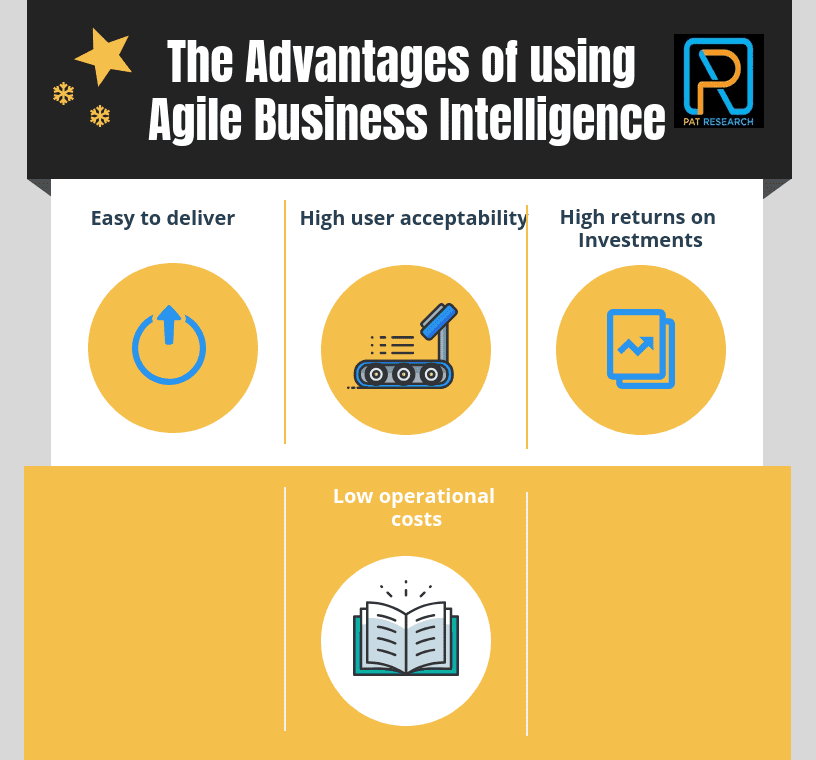
The Advantages of using Agile Business Intelligence
- Easy to deliver: The credibility of IT can be damaged by unexpected costs incurred more than budgeted amounts and falling behind schedules which can be costly to a company's revenue earnings. Agile Business Intelligence delivers products within a shorter period with various iterations.
Each iteration consists of independent software which is deployed to production. Agile BI focuses on fractionating projects and is driven by business defined scope and value. Project timelines are tracked in smaller units with clients paying for the amount specified.
You may like to read: Top Challenges every organization face in Business Intelligence
- High user acceptability: In Agile Business Intelligence, IT and business work in collaboration with each other enriching the business need in each iteration. This collaboration enhances user adoption by focusing on the dynamic needs of the non-technical business user, resulting in high end-user engagement and higher user adoption rates.
Unlike traditional approaches which have struggled to place user needs at the core of their processes, Agile Business Intelligence is more concerned with giving users faster and to functionality and more opportunities to provide feedback. Ultimately, user engagement equates to higher user satisfaction and adoption rates
- High returns on Investments: Organizations using agile business intelligence achieve an increase in rate-of-return (ROI) due to shorter development cycles. Agile BI minimizes the volume of IT resources and time dedicated to delivering results to clients. Clients and other users achieve satisfaction due to continuous delivery of usable software.
Agile BI contrasts significantly with the traditional waterfall product delivery, where large pieces of functionality are delivered towards the end of the project life-cycle. Throughout the development stages of waterfall method, the project incurs enormous costs with no return on investment.
By delivering working pieces of functionality sooner and more regularly, the users have an opportunity to get a return on their investment sooner. Even if they do not achieve all the functionality, they need upfront; they can put the solution into use and move towards making their lives easier and begin realizing the benefits sooner.
- Low operational costs: Due to limited resources and the need for budgets to be aligned with high potential deliverables and outcomes, business leaders turn to agile methods deliver projects within budget and on schedule thus increasing returns on investments. Conventional application development approaches are not suited or business intelligence.
The traditional waterfall methodology encompasses the collection, documentation, and transformation of user requirements into specifications. These specifications used by developers who undertake the design, testing and implementation cycle, while this traditional method works in conventional enterprises, it is not guaranteed to enjoy the same level of success in the majority of business intelligence requirement. In BI, the ‘build it, and they will come' mentality is encouraged since consumers are motivated to obtain tangible products and services.
You may like to read: Why Small Businesses Need Business Intelligence Software
A different approach is therefore required to make BI applications more sensitive to the ever-changing business and legal environment. Agile BI is an essential step towards the goal of designing responsive BI applications.
Conclusion
Increasingly, businesses will have to adopt Agile BI enhance organizational flexibility, responsiveness, and business competitiveness. Enterprises continue to exploit the benefits that come with Agile Business Intelligence to respond with speed to market demands.
To survival and prosperity in a competitive and globalizing marketplace, businesses from all industries and sectors have to develop the ability to scan their external environment, review their internal processes and make appropriate proactive and reactive changes. Modern businesses need to strive to invest in fact-based decision-making throughout their decision making structures.
Agile Business Intelligence solutions, with their end-user focused approach, enable organizations to anticipate and adapt to changing market and regulatory environment. Ultimately, certain considerations should be made in order to integrate the consumption of BI in the company. In the end BI system must be accepted and utilized for it to add value to the business.
Agile Business Intelligence (BI) is important because it allows organizations to respond quickly and effectively to changing business needs and market conditions. The agile approach to BI emphasizes flexibility and adaptability, allowing organizations to quickly pivot and adjust their data and analytics efforts as needed. This helps organizations to stay ahead of competitors and keep pace with rapidly changing market trends and customer needs. Agile BI also fosters a culture of continuous improvement, where data and analytics are used to drive iterative improvements in business processes and decision-making. With agile BI, organizations can more easily test and validate new ideas and strategies, and make data-driven decisions that deliver better results. The ability to quickly pivot and adjust is especially important in today's rapidly changing business environment, where organizations need to be nimble and responsive in order to succeed.
Here are the trending and the top rated Business Intelligence Software for you to consider in your selection process:
What is Agile Business Intelligence?
Agile Business Intelligence is defined as the use of agile software development methodology for business intelligence projects to reduce the time-to-value of traditional BI and help in quickly adapting to changing business needs. Executives and business users are able to make good decision with Agile BI.
What are the problems with traditional Waterfall Methods in BI?
The problems with waterfall methods include the model does not accommodate change, the need to complete on step before moving to the next phase, relegation of system audit at the last phase of development and impossible to estimate required costs and resources.
What are the Agile BI Project Management Methods?
The agile BI project management methods include scrum, dynamic system development method (DSDM), crystal methods, feature-driven development (FDD), lean development (LD), extreme programming(XP), adaptive software development(ASD) and agile modeling.
What are the Advantages of using Agile Business Intelligence?
Agile BI drives its users to self-serve BI. It offers organizations flexibility regarding delivery, user adoption, and ROI. The advantages include easy to deliver, high user acceptability, high returns on investments and low operational costs.
You may also like to read, Top Business Intelligence companies , Top Open Source and Free Business Intelligence Software , Cloud – SaaS – OnDemand Business Intelligence Solutions , Top Free Extract, Transform, and Load, ETL Software , Freemium Cloud Business Intelligence Solutions , Top Embedded Analytics Business Intelligence Software , Top Dashboard Software , Top Enterprise Performance Management Software ,Top Data Visualization Software,Top Business Intelligence Tools,Top Supply Chain Analytics Software,Top Conjoint Analysis Software,Top Unified Modeling Language (UML) Tools ,Top Mobile Business Intelligence Software ,Top Balanced Scorecard Software , Top Advertising Analytics Software and Top Business Process Management Software .

























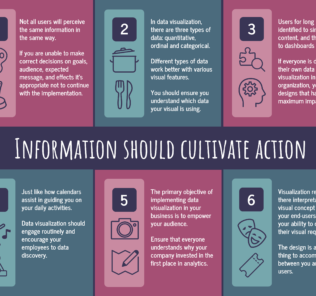
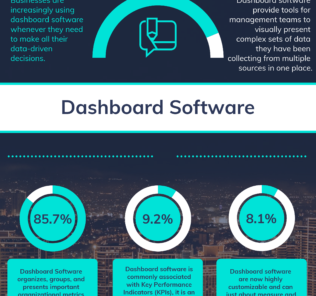
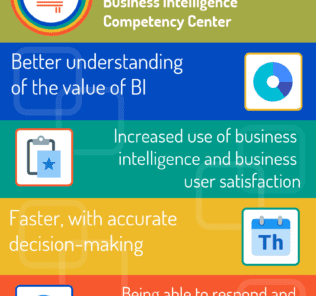
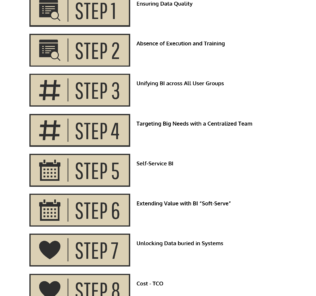
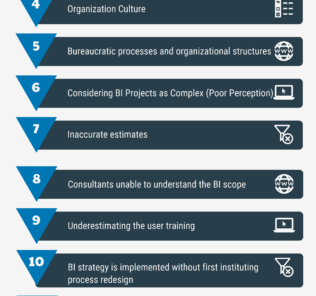
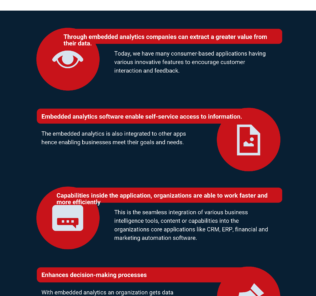




By clicking Sign In with Social Media, you agree to let PAT RESEARCH store, use and/or disclose your Social Media profile and email address in accordance with the PAT RESEARCH Privacy Policy and agree to the Terms of Use.